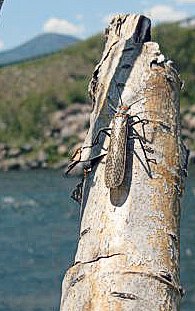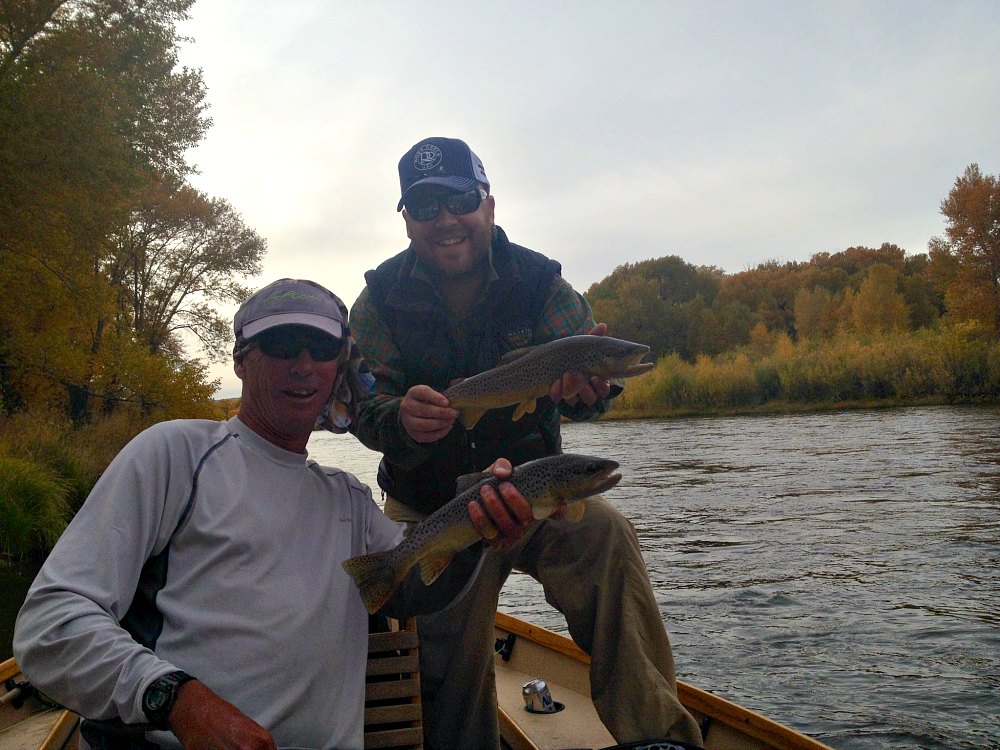- Brown
- Rainbow
Real-Time Data
Fishing Info
- Stonefly
- Caddis
- Mayfly
- 20 Incher
- Pat’s Rubberlegs
- Prince
- Chubby Chernobyl
- Sofa Pillow
- Rio Grande Trude
- Stimulators
June-Sept
Rio Grande National Forest
Massive summer hatches. From lower boundary of River Hill campground downstream to the west fence of Masonic Park: artificial flies and lures only; rainbow trout must be returned to water immediately; bag, possession, and max. size for brown trout is 2, 12 inches long. From Colorado 149 bridge at South Fork downstream to the Rio Grande canal diversion structure: artificial flies and lures only; rainbow trout must be returned to water immediately; bag, possession, and min. size for brown trout is 2, 16 inches long.
The writers of Western novels, along with Hollywood filmmakers, have painted a lasting but false impression of the river called the Rio Grande. The Spanish words meaning “big river” conjure up an image of dusty weather-beaten cowboys crossing a desert plain to a muddy sheet of water. Indeed, the Rio Grande is such a river in southern New Mexico and Texas, for the last four-fifths of its journey to the Gulf of Mexico. But 1,800 miles upstream from salt water the Rio Grande flows through another world, one of snowcapped peaks and aspen-dotted slopes.
 The Rio Grande, the second longest river in the United States, heads in the high mountains between Creede and Silverton. The river’s mountain journey takes it 60 miles east to the San Luis Valley where, near Alamosa, it turns south to flow into New Mexico. From the headwaters to Del Norte, the Rio Grande is fine trout water, including a stretch between South Fork and Del Norte where the slow-moving meandering river is designated Gold Medal Water. Within this westward bulge in the Continental Divide the river is joined by about 50 tributaries, each of which offers classic small stream angling for small trout. With small creeks, pocket water, wide riffles, and pools, the upper Rio Grande offers the fly fisher anything his or her heart desires.
The Rio Grande, the second longest river in the United States, heads in the high mountains between Creede and Silverton. The river’s mountain journey takes it 60 miles east to the San Luis Valley where, near Alamosa, it turns south to flow into New Mexico. From the headwaters to Del Norte, the Rio Grande is fine trout water, including a stretch between South Fork and Del Norte where the slow-moving meandering river is designated Gold Medal Water. Within this westward bulge in the Continental Divide the river is joined by about 50 tributaries, each of which offers classic small stream angling for small trout. With small creeks, pocket water, wide riffles, and pools, the upper Rio Grande offers the fly fisher anything his or her heart desires.
The towns of Del Norte, South Fork, and Creede are the center of operations for the upper Rio Grande. Del Norte and South Fork are located on U.S. 160 west of Alamosa and about 20 and 40 miles east of Wolf Creek Pass. From South Fork, Colorado 149 follows the river northwest about 20 miles to Creede, providing easy access to the water. West of Creede, CO 149 swings north, and Forest Road 520, located about 18 miles west of Creede, provides access to the river below and above Rio Grande Reservoir.
The Rio Grande is home to abundant stoneflies, and the salmon fly hatch of mid- to late June can be heavy. Although the hatch may occur during runoff, the water is clear enough to permit dry-fly fishing. Fish the hatch with adult stonefly patterns such as the Sofa Pillow, Bird’s Stone, or large Stimulators. Splashy casts that disturb the surface will often bring a vicious strike. Stonefly nymph patterns, specially the Bitch Creek, Pat’s Rubberlegs, and Twenty Incher, are a good choice all season long. Use size 6 to 10 patterns with additional weight to get them deep in the fast runs.
 The trout in this big water are not very fussy, and traditional big-water western patterns like the humpy and Royal Wulff will often produce, as will flies more carefully matched to naturals. Attractors such as Elk Hair Caddis, Dry Muddler, and Royal Wulff work well throughout the afternoon and evening. Keep flies large enough to be easily spotted in the fast, choppy currents. A size 10 or 12 fly will work well, particularly on cloudy afternoons. Late in the summer or in quieter stretches of water the same patterns in smaller sizes, or a size 12 or 14 Parachute Adams, will often bring a trout out of hiding.
The trout in this big water are not very fussy, and traditional big-water western patterns like the humpy and Royal Wulff will often produce, as will flies more carefully matched to naturals. Attractors such as Elk Hair Caddis, Dry Muddler, and Royal Wulff work well throughout the afternoon and evening. Keep flies large enough to be easily spotted in the fast, choppy currents. A size 10 or 12 fly will work well, particularly on cloudy afternoons. Late in the summer or in quieter stretches of water the same patterns in smaller sizes, or a size 12 or 14 Parachute Adams, will often bring a trout out of hiding.
Brown trout swim the Rio Grande in incredible numbers, and fish are found everywhere. Browns are particularly fond of holding in deeper water near the banks and under the roots of willows in slow-moving water. In choppy runs about a foot deep trout will hold in the rocks on the bottom, freely rising to dry flies or taking nymphs at any depth. Look for current seams where a slow current passes against a faster one. Good fish can be taken from lies within a rod’s length from where you are standing. Be watchful for hidden deep runs where large nymphs can snare a good-sized brown.
Because of the size of the river and the many stretches of private property that require permission to fish, floating this stretch with an experienced guide is an excellent way to get into some large browns. The river is floatable from above Creede to Twin Mountain Bridge. With numerous access points you can plan a wide variety of trips ranging from a half-day to two days.
Before mid-June the river is generally too cold for good fishing, and after August 1 the river is too low to float. Float trips are especially desirable during the early summer, when the river is fishable but still running high. During this time the river is awkward to wade but perfect for floating. Casting into the holding water along the bank from midstream is the easiest way to reach the trout during high flows. In addition, the floating season coincides with the timing of major hatches on the river. One can float and cast salmon flies, Golden Stones, Green Drakes, and caddis to rising trout all day.
 The Gold Medal Water fishes well into the fall, when angling is most productive in the afternoon. Large beadhead, Peacock, and Pheasant Tail nymphs or streamers are your best bet. Baetis hatches occur on fall afternoons, and you should fish the hatch with your favorite Blue-Winged Olive patterns.
The Gold Medal Water fishes well into the fall, when angling is most productive in the afternoon. Large beadhead, Peacock, and Pheasant Tail nymphs or streamers are your best bet. Baetis hatches occur on fall afternoons, and you should fish the hatch with your favorite Blue-Winged Olive patterns.
If we had to limit ourselves to fish one stream for the rest of our lives, it would be the Rio Grande. The incredible variety of fishing experience to be had on the river always provides a new challenge or a different setting in which to cast a fly. Populations of strong, wild trout add to the lure of the river, so different in reality from the picture normally conjured by the words “Rio Grande.”
To arrange a guided float trip, contact us here at the shop but be forewarned that the Rio Grande float season books fast and early.
The Above Information on the Rio Grande River is excerpted from the book “Fly Fishing Southern Colorado” by Craig Martin, Tom Knopick and John Flick. It is reprinted courtesy of Pruett Publishing Company. All Rights Reserved.
Copyright 1997, 2007 by Craig Martin, Tom Knopick, John Flick

